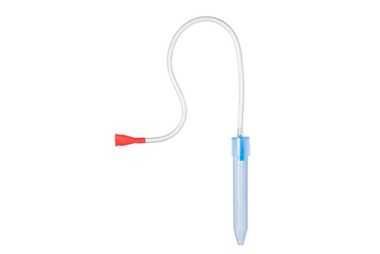
NoseFrida, the snotsucker
When dealing with colds in babies, there are some pretty unconventional methods out there. This one might raise your eyebrows, but it works. The NoseFrida is a device that, unlike a bulb syringe aspirator, puts the power of the suction in the parents’ mouth (yes, you read that correctly). The NoseFrida made in Sweden, is designed so that one end of the device goes into the parent’s mouth, while a “mucus collector” is placed inside the edge of your baby’s nostril. Mom or dad then sucks the tube like a straw, and baby’s congestion is relieved, at least for a little while. (Watch this demo.) Rest assured, there is no exchange of bodily fluid between baby’s nose and the parent’s mouth—a divider that blocks the transmission of fluid is placed inside the tubing.
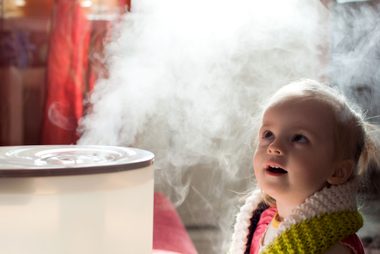
Cool mist humidifier
For anyone who’s pulled all-nighters with a baby that can’t sleep because of congestion and coughing, the cool mist humidifier is your new best friend. Many of the Vicks brand cool mist humidifiers also have the option of use with their Baby VapoPads (menthol free) that provide congestion-reducing benefits. This is additionally helpful for babies who need relief from nasal and chest congestion in particular. The humidifiers can provide relief day and night from the worst symptoms of a bad cold, with zero worries about burns, as can happen with warm-mist humidifiers. Here’s how to choose the right humidifier for your space.
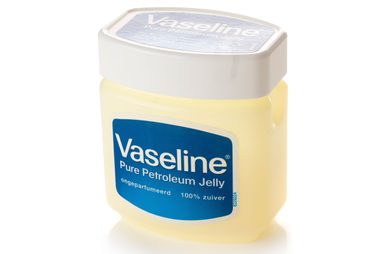
Vaseline
Along with congestion and coughing, children’s cold and flu often also presents with a runny nose. Even the most attentive parents, who are always ready with a tissue in hand, cannot prevent the redness and chapping around the tiny noses they are constantly wiping. Vaseline or petroleum jelly can work wonders for colds in babies, providing a moisture barrier to sensitive and irritated skin. Dab a little around your baby’s nose to prevent his skin from the cracking and dryness commonly associated with a bad cold. Placing the jar of Vaseline in the refrigerator first can add a soothing coolness to the irritated skin. To prevent skin irritation from nose wiping, use tissues made with lotion, or ditch the tissues altogether and wipe baby’s nose with an extra soft t-shirt or cloth.
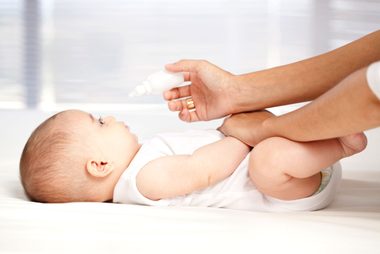
Saline drops
A lot of congestion during a cold is due to the swelling of mucus membranes in the nasal passages. A saline drop solution can help to reduce inflammation inside the nose, as well as thin out the mucus, enabling it to drain freely (get those tissues ready). Giving saline drops to a baby is never as easy as parents hope, but they do provide relief once they’ve reached their destination inside the nose. Prop up the baby after dosing with the drops to ensure that the fluid doesn’t flow down his or her throat. And make sure to never confuse saline drops with a saline nose spray, as the flow from the spray can be much too forceful for the small nasal passages of infants.
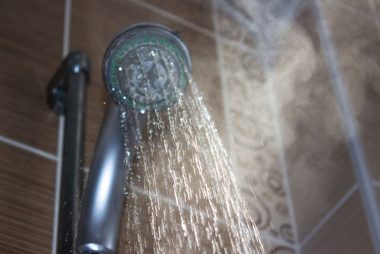
Steam
Sometimes the simplest cold relief remedies are the most effective, and this is the case here. If you’re wondering about how to help baby with cold symptoms that just won’t let him sleep, try to sit with him in a steamy room, usually the bathroom. Turn on the shower and let the hot water fill the room with steam, while you sit with him or her and encourage deep breaths. Another option is to bathe the baby and gently rub his chest and back to help loosen phlegm and massage away the aches that come with cold and flu. Never use hot water when bathing an infant, and never leave him unattended in the bath for any reason.
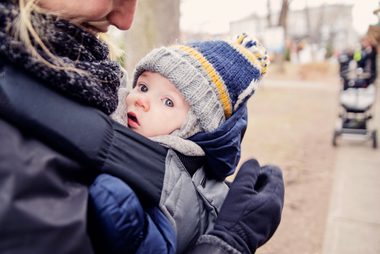
Cold air
Moms and dads spend most of the winter months trying to keep their babies from the chilly air outside, but when a baby has a cough that won’t let her sleep, a bit of cold air does more good than harm. Cold air can help the lungs to relax and stop the continuous spasms that can lead to a never-ending coughing fit. If you don’t feel comfortable taking your sick baby out into the frigid outdoors, simply open the freezer door on your refrigerator briefly. Hold your baby up to the cool air and allow him to take in a few deep breaths. This can be repeated as necessary, but make sure to let your baby warm up in between coughing fits.
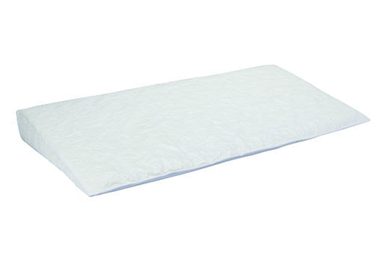
Crib wedge
Elevating a baby’s head during sleep can help provide the angle needed to promote better breathing during nasal congestion. Just as an extra pillow relieves a stuffy nose for adults during sleep, a wedge can provide better sleep for babies during the worst of a cold. A crib wedge placed under the crib mattress (never directly under baby as this can increase the risk of SIDS) will help mucus flow out of an infant’s nose and not down her throat, which can cause her to cough or choke on the fluid. Crib wedges can also benefit babies with reflux issues as well.
